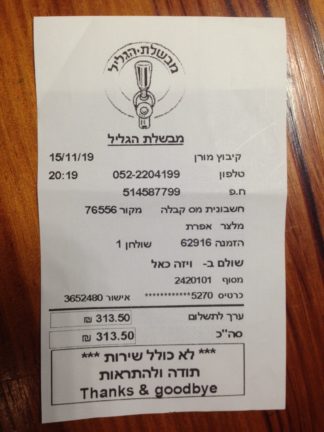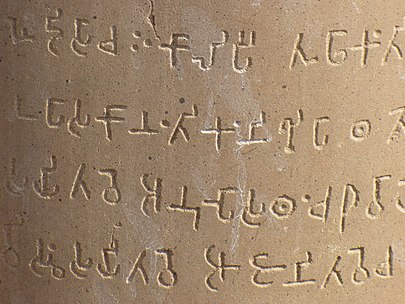A standard Israeli till receipt:

The text is on the right, as Hebrew is written right-to-left. The numerals are on the left, written left-to-right, as is standard with Arabic numerals.
Wait a minute. Arabic text is also right-to-left. So why do its numbers go the other way?
Because they were not originally Arabic but Indian. The attribution is not incidentally at all controversial. The two eminent mathematicians who popularised the system in the Muslim world around 830 CE, the Persian Al-Khwarizmi (who gave his name to algorithm) and the Arab Al-Kindi, entitled their treatises respectively On the Calculation with Hindu Numerals and On the Use of the Indian Numerals: no concealed attribution there. The decimal point was the work of an earlier Iraqi Jewish scholar, Sind ibn Ali. A full treatment of zero had arrived quite late in India, in the work of Brahmagupta (628 CE).
India used and still uses a lot of different scripts. But the common ancestor of many is the Brahmi script adopted by the Buddhist emperor Ashoka, reigned 268 to 232 BCE. Brahmi is left-to-right, and so are its numerals.

The first widely used alphabet was the Phoenician, around 1200 BCE. It was right to-left. You have to ask: why would anybody have chosen this unhandy scheme? Unless you are left-handed: a small minority (around 10%) of most populations, but sometimes they get to be kings, high priests, merchant tycoons or tennis champions, in a position to get their way. But both the main earlier non-alphabetic scripts, Mesopotamian cuneiform and Egyptian hieroglyphs, run left-to-right, so it’s an odd choice. The Archaic Greeks switched direction back at the same time as they democratised writing, including for bawdy inscriptions on winecups.
It’s controversial whether Indian alphabets had a Phoenician ancestry – some Indian scholars argue for a purely subcontinental origin – but it’s likely. At all events, early Indian scribes followed or paralleled the majoritarian Greek choice of left-to-right, and Ashoka set it in stone.
For numbers, there is no particular advantage in one direction over the other. To evaluate a positional decimal number, you have to count outwards from the decimal point in both directions. Right-to-left and left-to-right are mirror equivalents. The direction was determined by the non-numerical script it was embedded in.

Someone spread a meme on Twitter a few years ago, I think it went “Children being taught Arabic numerals in State schools!” and it fooled an alarming number of people into registering their horror.
A friend who is a retired law professor described to me an incident in one of his classes where, in asking a student to look at some material in the text, he said,
“It’s near the bottom of the page, where the Arabic numerals are.”
Came the response,
“I’m sorry. I don’t know Arabic.”
Rex Stout wrote a Nero Wolfe mystery (“The Zero Clue;” 1953) in which the solution hinges on Wolfe’s use of the discovery of zero as a notation device by, as Stout put it, some unknown Hindu genus.
Is “genus” your typo, or Wolfe’s?
Mine. Rex Stout never made a typo in his life. (Insert “smiley”)
Stout may have made typos, although if so, a good copy editor apparently caught them. Wolfe, on the other hand, . . . .